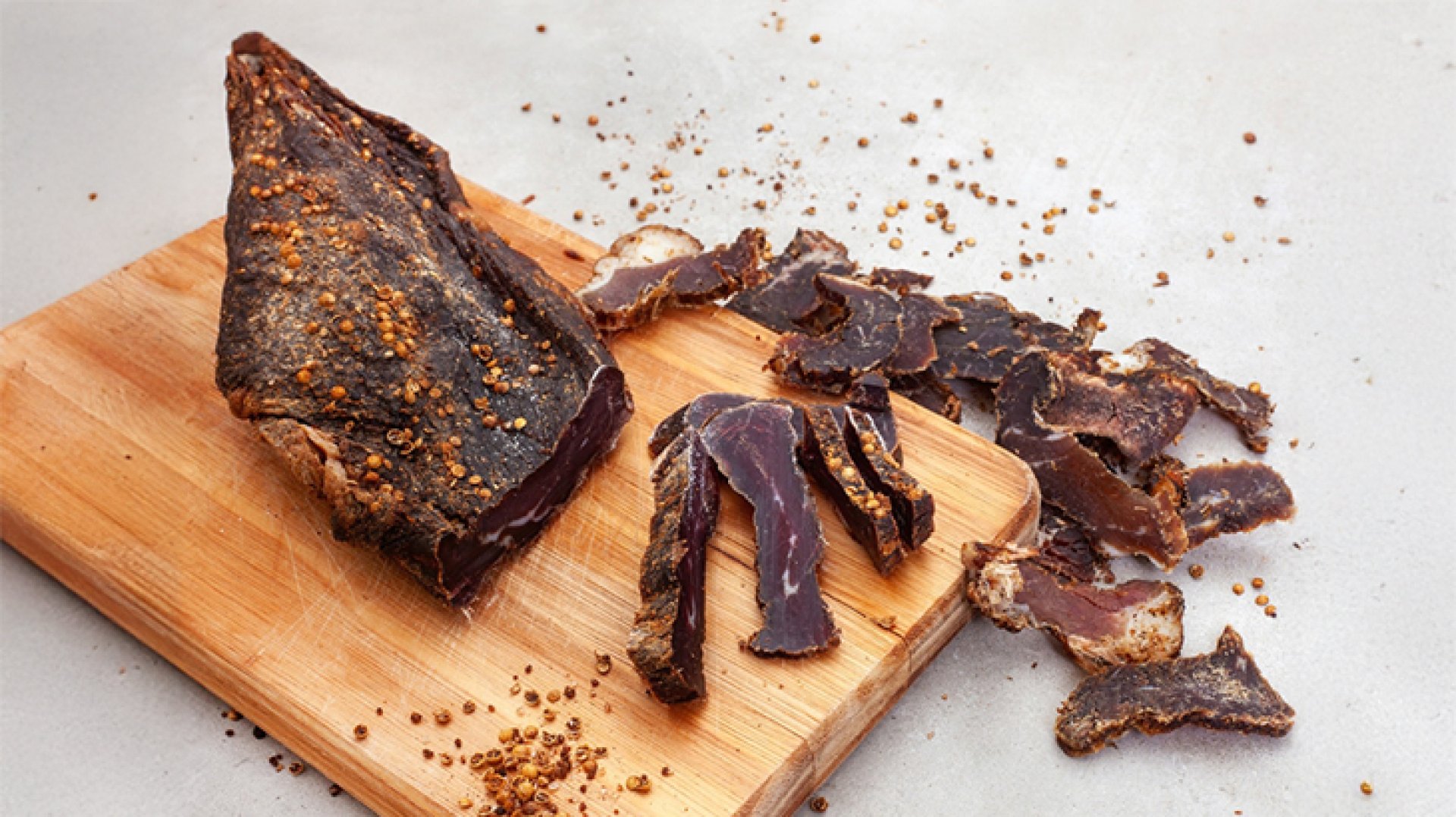Biltong

Indigenous Roots in Khoisan Tradition
Biltong began as a simple preservation method by Khoisan tribes in South Africa, who sliced meat thin, seasoned it, and left it to air drycreating a high-protein snack ideal for harsh conditions.
Dutch Influence Brought Flavor and Balance
In the 17th century, Dutch settlers enhanced this tradition with vinegar, salt, and spices like coriander and black peppergiving Biltong its signature tangy, savory taste and longer shelf life.
Survival Food of The Great Trek
During the 1830s Great Trek, Biltong became an essential travel food for Dutch settlers. Lightweight, nutritious, and durable, it offered sustenance on long journeys into the interior.
A Cultural Icon Among Afrikaners
Over time, Biltong became embedded in Afrikaner culture. Once survival food, it is now a beloved national snackserved during picnics, sports events, and family gatherings.
Global Health Trend: High-Protein and Low-Carb
Today, Biltong is a global hitespecially in the UK, USA, and Australiaamong athletes, fitness enthusiasts, and anyone seeking a clean, protein-rich snack without added sugars.
Biltong vs. Jerky: What's the Difference?
- Biltong: Air-dried, marinated with vinegar and spices, yielding tender texture and tangy, spiced flavor
- Jerky: Heat-dried, often smoked and marinated in sweet, salty, or spicy sauces, resulting in a tougher, smoky finish


